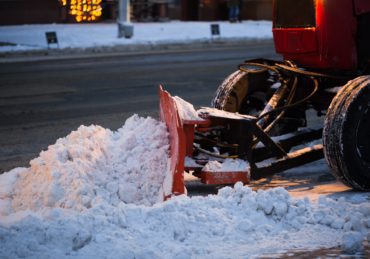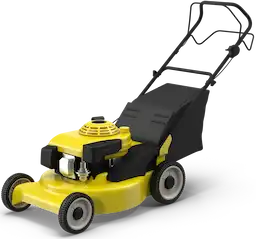So, your lawn’s looking more like a doormat than a lush green carpet? You’re not alone. Every year, thousands of homeowners watch their grass fade to a crispy brown and wonder if it’s even worth saving. The good news? In many cases, that “dead” grass isn’t actually dead, it’s just in need of some attention. And yes, you can bring it back without becoming a full-time groundskeeper.
Let’s walk through the steps to figure out what’s going on, why it happened, and how to fix it before the neighbors start a petition to install artificial turf.
Spotting the difference between dormant and dead grass
Before you break out the seed and fertilizer, it’s important to know if your grass is actually dead. Dormant grass just looks bad, it’s nature’s way of conserving resources during tough weather.
Here’s the quick way to tell:
- Tug Test: Gently pull on a tuft of grass. If it slides out like spaghetti from a colander, it’s gone. If it resists, you might just have dormancy.
- Crown Check: Look at the base of the blades. Firm and pale/white? Dormant. Brown and mushy? Dead.
- Soil Feel: Healthy dormant lawns still have slightly moist soil beneath. Dead lawns often feel dry and crumbly even after watering.
In North Carolina, we’ve seen lawns look completely gone after a blazing summer, only to find, with a quick tug test, that most of the grass was just dormant.
Why lawns turn brown (and how to stop tt)
Knowing why the grass went bad helps you prevent it from happening again. These are the usual suspects:
- Drought Stress – In warm regions, especially during summer, heat and low rainfall force grass into dormancy. Without enough water, it stays brown longer.
- Overwatering – Believe it or not, you can love your lawn to death. Too much water drowns roots and promotes fungus.
- Soil Compaction – Heavy foot traffic or clay-heavy soil means water and nutrients can’t get where they need to go.
- Pests and Diseases – Grubs, chinch bugs, and fungal infections can eat away at healthy grass before you notice.
- Weeds – They hog the water, sunlight, and nutrients, leaving your turf starved.

If you’re not sure which one you’re dealing with, a quick soil test or inspection from a lawn pro can save you a lot of guesswork.
How to revive dead grass fast
Once you’ve identified the issue, it’s time to bring your lawn back to life. This isn’t about throwing seed at the problem and hoping, it’s a process.
Step 1: Clear the dead weight
Rake up any dead grass, leaves, and debris. Think of it like clearing the dining table before you serve dinner. The cleaner the surface, the better the results.
Step 2: Aerate the soil
Use a core aerator or even a garden fork to poke holes 2–3 inches deep. This gives roots better access to water, oxygen, and nutrients. If your lawn gets a lot of foot traffic, this step is non-negotiable.
Step 3: Overseed with the right grass
Match the seed to your region and season, cool-season grasses like fescue thrive in northern states, while Bermuda and zoysia do well down south. Spread it evenly, and lightly rake to get good seed-to-soil contact.
Step 4: Feed it well
Apply a starter fertilizer high in phosphorus to encourage root development. Just don’t overdo it, fertilizer isn’t like coffee, more doesn’t mean better results.
Step 5: Water consistently
For the first two weeks, water lightly twice a day to keep the soil moist. Once the grass sprouts, switch to deep watering 2–3 times per week, aiming for about 1–1.5 inches total.
Fixing small dead patches without reseeding the whole lawn
Sometimes the damage is contained to just a few spots, maybe from a dog’s “bathroom habits” or a forgotten kiddie pool. In that case:
- Remove debris and dead grass
- Loosen the soil with a hand rake
- Apply compost or enriched topsoil
- Sprinkle seed and water regularly
We’ve seen bare spots shaped like frisbees disappear in under a month just by loosening the soil and keeping it watered.
Seasonal tips for preventing lawn death
Your approach to lawn care should change with the seasons:
- Spring: Test the soil, aerate if needed, and overseed bare spots early before weeds take over.
- Summer: Water deeply but less frequently to encourage strong roots.
- Fall: Ideal time for aeration, dethatching, and heavy overseeding for cool-season grasses.
- Winter: Keep off frozen turf to prevent crown damage.
In the southern U.S., warm-season lawns often go dormant in winter, don’t panic if your Bermuda turns brown in January. In northern areas, winter damage can be avoided by not piling snow from the driveway onto the lawn.
When it’s better to start fresh
If more than half the lawn is dead, it’s usually smarter to remove everything and start from scratch. Sod installation is the fastest fix, new grass in a day, rooted in about two weeks. Seeding is cheaper but takes more patience.
Frequently Asked Questions
Can you revive dead grass?
In many cases, yes, but only if it’s not truly dead. If the grass crowns are still firm and pale, it’s likely dormant and can bounce back with proper care. If they’re brown and mushy, reseeding or sodding is your best bet.
How do you revive dead grass spots?
Clear the dead grass, loosen the soil, add compost or topsoil, sprinkle the right seed for your region, and keep it moist. Think of it like patching a favorite pair of jeans, small fixes can make the whole thing look new again.
What’s the fastest way to revive dead grass?
Prep the lawn by removing debris, aerating, overseeding, applying a starter fertilizer, and watering twice a day until seeds sprout. Warm weather and consistent moisture can speed things up.
Will watering dead grass bring it back to life?
If it’s dormant, yes, regular watering can revive it. If it’s truly dead, water alone won’t work. You’ll need to reseed or lay sod.
Can you just throw grass seed on top of dead grass?
Not if you want good results. Dead grass acts like a barrier, keeping seeds from reaching the soil. Always rake it out first for better germination.
Need a Hand Getting It Done?
Bringing back a lawn can be a lot of work, especially if you’re staring at patchy brown turf right now. Instead of renting tools, hauling seed, and guessing at fertilizer rates, you could call in a pro. LawnGuru’s lawn care experts can aerate, overseed, handle weeds, and even take care of pests for you, so all you have to do is enjoy that green view from the porch.





